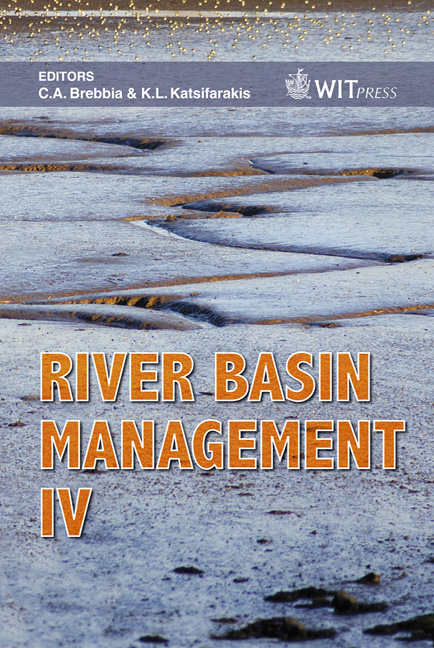Three-dimensional Flow In A Barb Field
Price
Free (open access)
Transaction
Volume
104
Pages
10
Published
2007
Size
741 kb
Paper DOI
10.2495/RM070351
Copyright
WIT Press
Author(s)
B. Minor, E. Jamieson, C. D. Rennie & R. D. Townsend
Abstract
Barbs (or submerged groynes) are low-profile linear rock structures that are primarily used to prevent the erosion of stream banks. They are a variation of a groyne, similar to spur dikes and bendway weirs. Barbs are typically anchored, in series, to the outside bank in stream bends and extend in an upstream direction from the bank into the flow. This configuration redirects flow away from the outer stream bank and disrupts the velocity gradient close to the outer bank, encouraging sediment deposition adjacent to the barb. These interactions between the flow pattern and the sediment transport around the barb prevent erosion of the bank. Furthermore, vortices generated by the barb create local scour holes that can enhance aquatic habitat. A three-dimensional numerical model, Sediment Simulation in Intakes with Multiblock option (SSIIM), was used to examine the turbulent flow field and associated scour and depositional patterns due to a series of barbs in a mobile-bed channel bend. Previous physical model observations were used for model calibration and verification. Barb design was optimized to minimize scour. The parameters considered in the optimization were channel bend angle, barb alignment angle, and barb spacing. In this paper the spatial distribution of the three-dimensional flow field through a series of barbs in a 90º channel bend are mapped and the impact on the flow field of subtle differences in barb geometry are examined. Special emphasis is placed on the influence of barb design on secondary currents in the meander bend and the generation of three-dimensional vortices, and the consequent impact on scour. Keywords: channel bends, three-dimensional flow field, numerical models, mobile bed models, barbs, submerged groynes, scour, secondary flow, vorticity.
Keywords
channel bends, three-dimensional flow field, numerical models, mobile bed models, barbs, submerged groynes, scour, secondary flow, vorticity.





